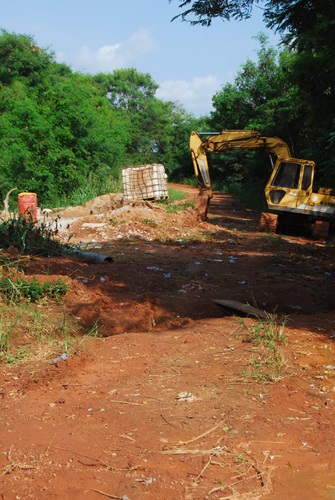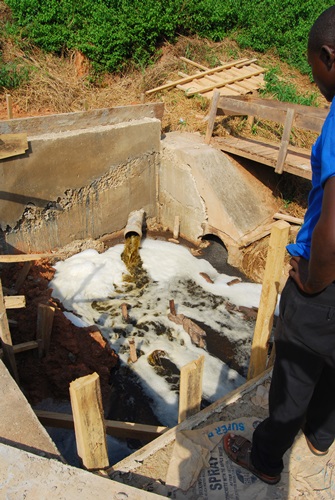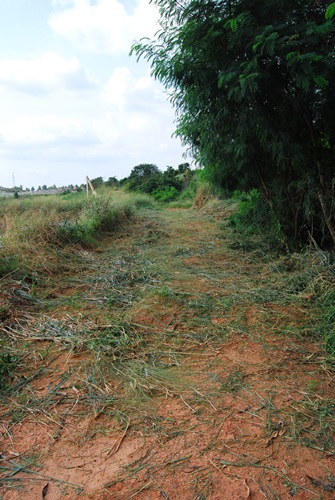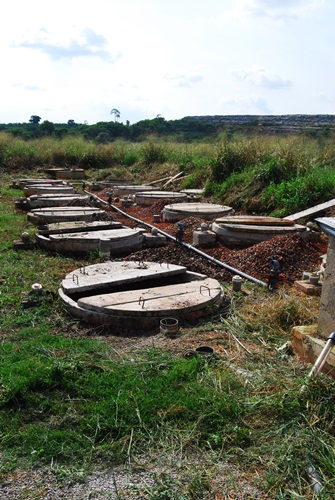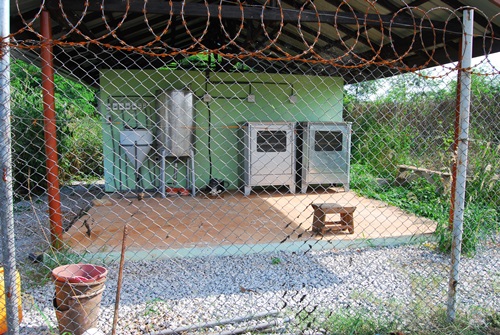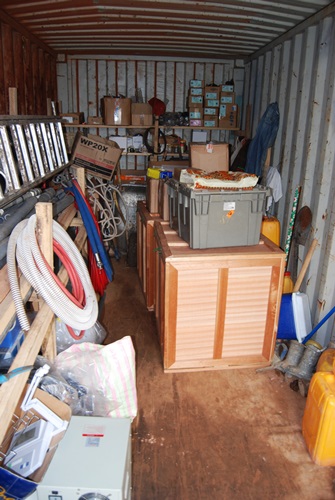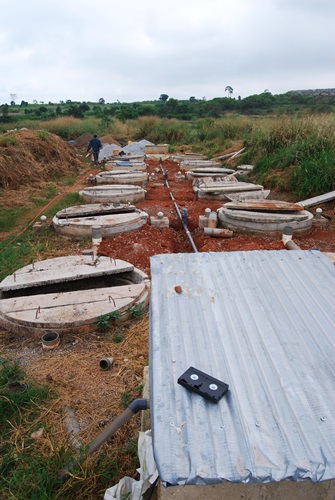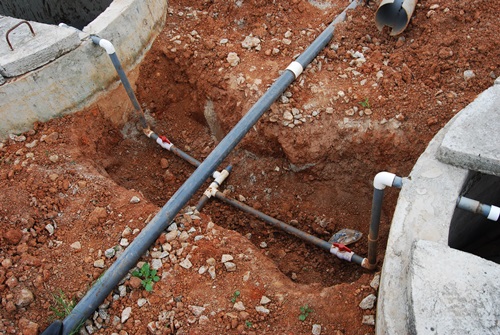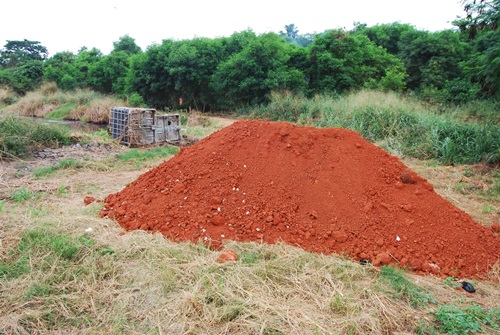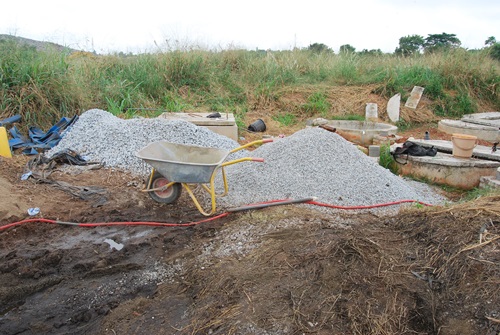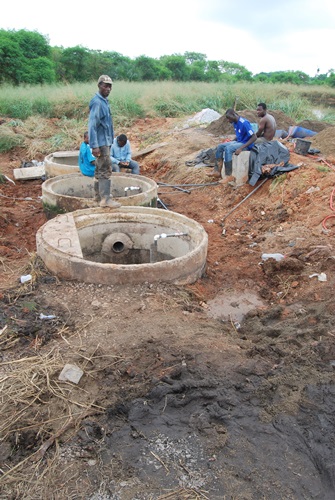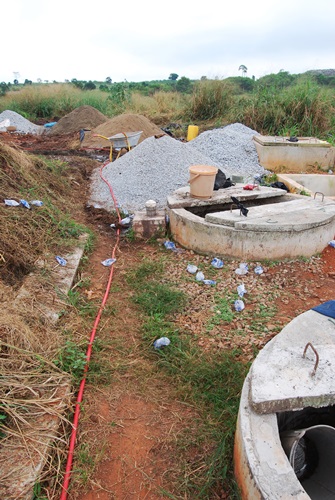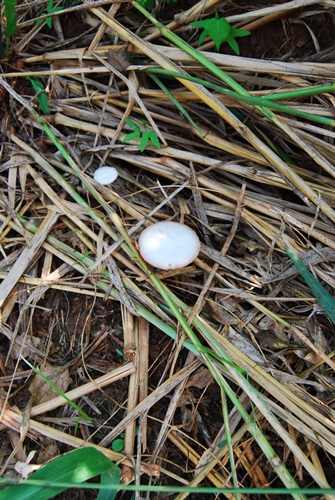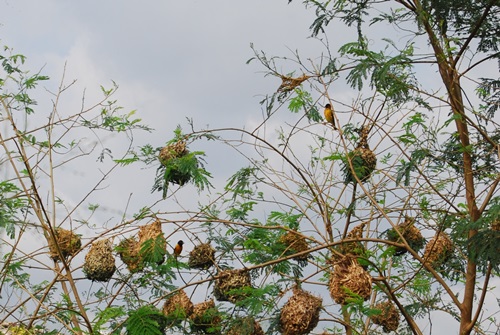A last visit to the wilds of Dompoase
ACCESS DENIED
Getting to the FS2BD site has often been an adventure. And then they tore up the road to rework the outflow of the main fecal sludge ponds. This means that we are no longer able to drive all the way to the site without a truck, which we don’t have. That’s Ghana for you!
REMEDIATION OF A JOB HALF DONE
The engineering firm that designed and constructed our site infrastructure left something to be desired, and to be fixed when we were done with our research. The access road (left) will need to be properly graded and graveled in order for the next tenants to have vacuum trucks safely deposit at the site. The fermenters (right) suffered due to the lack of compaction of the fill dirt when they were installed. This meant that the gas pipes were pulled down and fractured, causing leaks. The contractor is now digging them up, repairing the connections, and then refilling with fresh dirt.
ASSETS TO BE RE-DEPLOYED
The biodiesel equipment (left) will go to the Energy Center at KNUST for use by their nascent biodiesel program. The lab equipment was moved from the KNUST mini-lab and placed in two wooden crates to be used by the next project, along with a lot of other productive equipment in the 20 foot container onsite.
FILL ‘ER UP!
New fill dirt was trucked to the site make up for the settling that occurred, and the gas lines were repaired.
PILES EVERYWHERE
Red laterite is used for fill as it compacts well (if a compaction tool is used.) Gravel of various sizes was brought in to remediate the sand filters. They were terribly undersized and became clogged with solids after just a couple weeks of use.
DIRTY JOB
Digging out the sand filters was definitely a dirty job, and a lot of manual labor. Media (sand and gravel) of different sizes is used to provide progressive filtration for the digester effluent.
BEAUTY IS WHERE YOU FIND IT
As we left the site for the last time, we stopped to admire some mushrooms that were taking advantage of the rich growing medium. Weaver birds also take advantage of the abundance of seeds available on the grasses growing at the landfill site. The grass also provides them with building material for their woven nests – one stop shopping!
